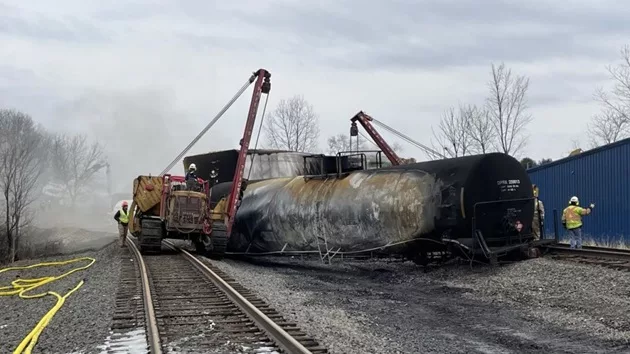
In the early hours of February 3, 2023, a Norfolk Southern train derailed in East Palestine, Ohio. The cause of the derailment was later determined to be a hot railcar wheel bearing that sparked a fire. However, missteps, faulty track sensors, and delayed communications about the toxic cargo from Norfolk Southern contributed to the disaster's severity. About 25% of the railcars on this train had federal defective conditions before it derailed. The incident led to an evacuation of over 2,000 residents due to hazardous materials in the derailed tankers.
The National Transportation Safety Board (NTSB) conducted a thorough investigation into the cause of the crash and its aftermath. Their findings revealed that Norfolk Southern's miscommunications about the toxic cargo on board, faulty track sensors, and delayed response to critical alarms were significant factors in this disaster. The NTSB also noted that 31% of Norfolk Southern's railcars had federal defective conditions before the crash.
The derailment resulted in a massive fire that released toxic chemicals into the air. First responders arrived on the scene and attempted to extinguish the fire with water, but they were not informed about specific hazardous materials until 10 p.m. Fire crews learned of these hazardous materials around midnight and recommended a 'vent and burn' procedure for tank cars containing vinyl chloride, which resulted in a toxic plume of smoke being released into the air.
The NTSB made several recommendations to prevent similar incidents from happening in the future. These include ways to advance communication between Norfolk Southern and first responders, establishing standards for railroad responses to bearing failure alarms, creating a database for reporting hot wheel-bearing incidents, and providing volunteer firefighters with training on handling emergencies involving hazardous materials.
Norfolk Southern agreed to a $600 million settlement in April 2023 to resolve a class action lawsuit stemming from the train derailment. The company also announced plans to lead an industry-wide effort to improve vent and burn decisions after the East Palestine derailment.



